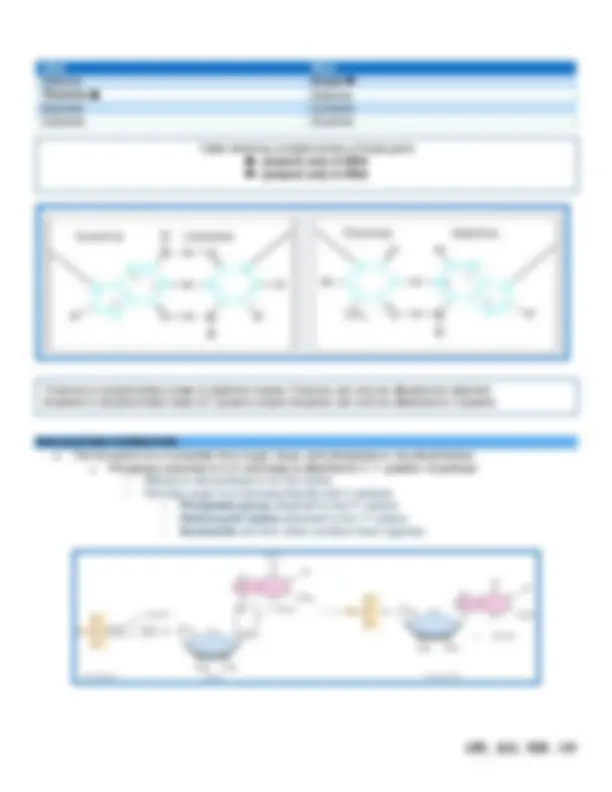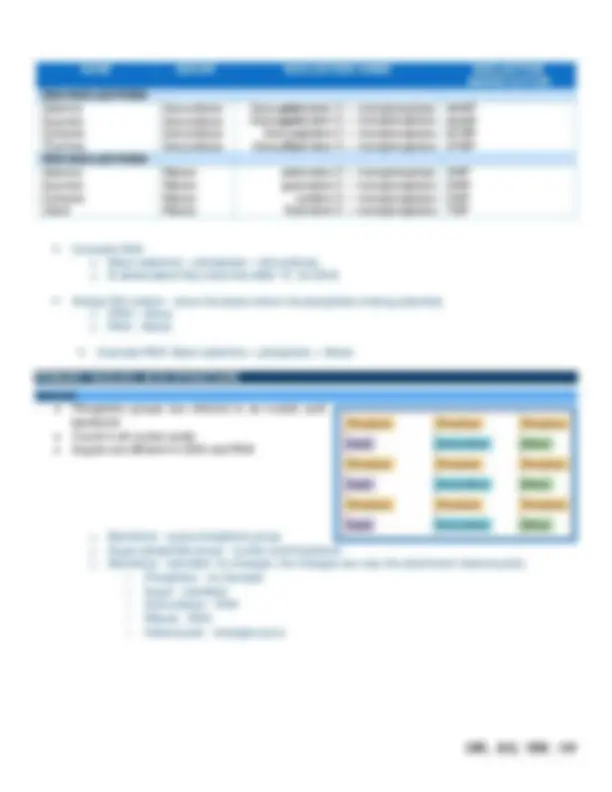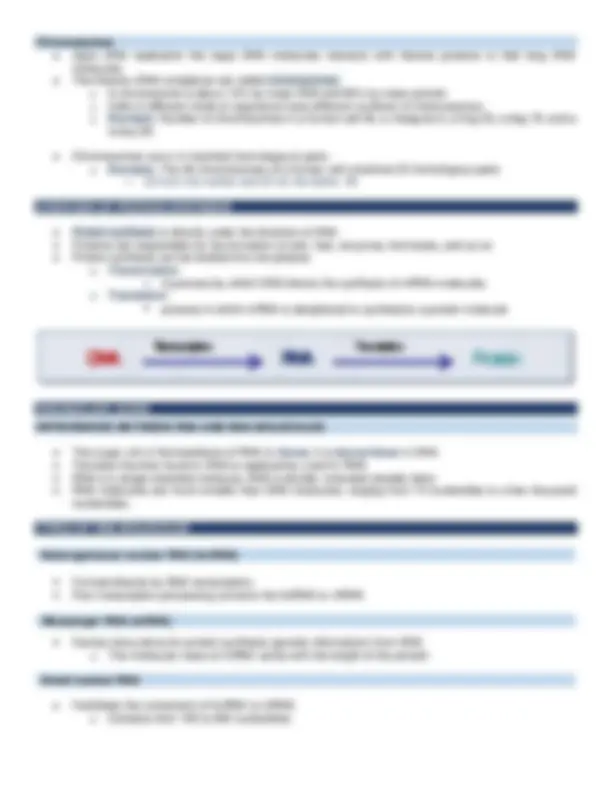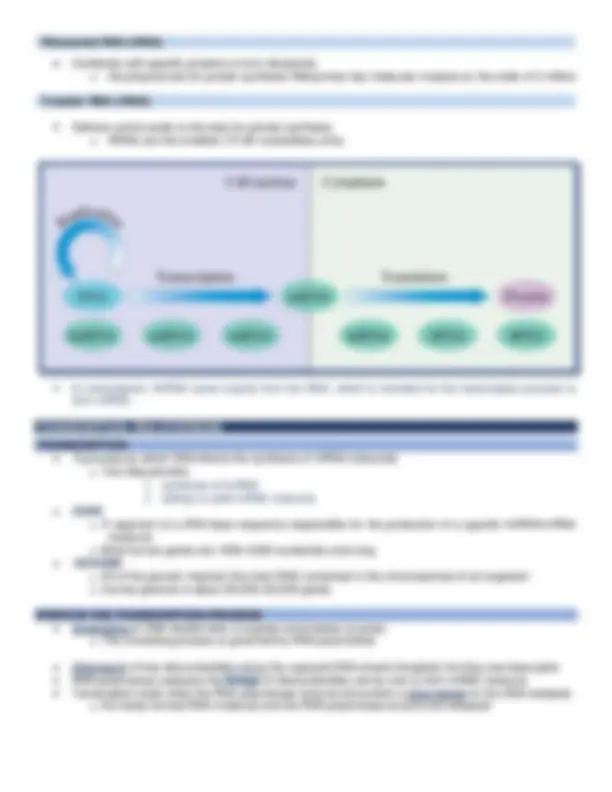








Study with the several resources on Docsity

Earn points by helping other students or get them with a premium plan


Prepare for your exams
Study with the several resources on Docsity

Earn points to download
Earn points by helping other students or get them with a premium plan
Community
Ask the community for help and clear up your study doubts
Discover the best universities in your country according to Docsity users
Free resources
Download our free guides on studying techniques, anxiety management strategies, and thesis advice from Docsity tutors
They're found in a variety of foods and beverages, including barley, tea, and wine, and are powerful antioxidants.
Typology: Study notes
1 / 10

This page cannot be seen from the preview
Don't miss anything!







● One of the biologically important macromolecule that is why they called it “BIOMOLECULE” o Biomolecules are Carbohydrates, Lipids, Nucleic Acid, Protein ● Its function is to carry genetic material TYPES OF NUCLEIC ACIDS ● Cells in an organism are extract replicas o because it has capability to make new cells or know as replication process o they copy the genetic code or material ● Cells have information on how to make new cells ● Molecules responsible got such information are nucleic acids o Found in nucleus and are acidic in nature ● A nucleic acid is polymer in which the monomer units are nucleotides o Monomer – basic structure or simplest ▪ monosaccharide is monomer of Carbohydrates ▪ fatty acid is monomer of Lipids ▪ nucleotides is monomer for Nucleic Acid o Polymer – largest ▪ Ex: Carbohydrates and Lipids ▪ Carries the Genetic materials TWO TYPES OF NUCLEIC ACIDS ● DNA (Deoxyribonucleic Acid) o Found within cell nucleus o Storage and transfer of genetic information during replication and transmission o Passed from one cell to other during cell division ● RNA (Ribonucleic Acid) o Occurs in all parts of cell ▪ As long as it has a ribosome, it has the ability for protein synthesis ▪ Most of the organelles are ribosome containing o Primary function is to synthesize the proteins NUCLEOTIDES: BUILDING BLOCKS OF NUCLEIC ACID NUCLEIC ACIDS: ● Polymers in which repeating unit of nucleotide o Nucleotide + Nucleotide = Nucleic Acid o DNA Sequence & RNA Sequence o there are several nucleotides present in Nucleic Acid ● A nucleotide has three components: o Pentose Sugar: ▪ Monosaccharide with five carbons o Phosphate Group (PO 43 - ) o Heterocyclic Base
● Ribose is present in RNA ● 2 - deoxyribose is present in DNA ● Structural difference: o a—OH group present on carbon 2 in ribose ▪ Hydroxyl groups are attached in carbon 2 o a—-H atom in 2-deoxyribose ▪ Hydrogen is attached in carbon 2 ● RNA and DNA differ in the identity of the sugar unit in their nucleotides. NITROGEN-CONTAINING HETEROCYCLIC BASES ● There are a total five bases (four of them in most of DNA and RNAs) ● Three pyrimidine derivatives (CUT) – thymine (T), cytosine (C), and uracil (U) ● Two purine derivatives (AG) – adenine (A) and guanine (G) o Adenine (A), guanine (G), and cytosine (C) are found in both DNA and RNA. ▪ Mnemonics : CAG (Cat Ate Glue) – both DNA & RNA o Uracil (U) found only in RNA o Thymine (T) found only in DNA. 3 pyri derivatives (CUT) – Cytosine, Uracil, Thymine 2 puri derivatives (AG) – Adenine, Guanine DNA & RNA (CAG) – Cytosine, Adenine, Guanine DNA (U) – Uracil RNA (T) - Thymine PHOSPHATE ● Third component of a nucleotide, is derived from phosphoric acid (H 3 PO 4 ) ● Under cellular pH conditions, the phosphoric acid is fully dissociated to give a hydrogen phosphate ion (HPO 4 2 - ) COMPLEMENTARITY OF BASES ● NOTE: BE FAMILIARIZE OMCAKES!! ● The different bases in the nucleotides which make up DNA and RNA are: o Adenine o Guanine o Cytosine o Thymine (DNA only) o Uracil (RNA only) ● Chemical structure only allows bases to bind with specific other bases due to chemical structure
Adenine Guanine Cytosine Thymine Deoxyribose Deoxyribose Deoxyribose Deoxyribose Deoxy ade nosine 5’ – monophosphate Deoxy gua nosine 5’ – monophosphate Deoxy cy tidine 5’ – monophosphate Deoxy thy midine 5’ – monophosphate dAMP dGMP dCMP dTMP RNA NUCLEOTIDES Adenine Guanine Cytosine Uracil Ribose Ribose Ribose Ribose adenosine 5’ – monophosphate guanosine 5’ – monophosphate cytidine 5’ – monophosphate thymidine 5’ – monophosphate
Example DNA: o Base (adenine) + phosphate + deoxyribose o In abbreviation they have the letter “d”, for DNA. Always fifth carbon - since this place where the phosphate is being attached. o DNA – deoxy o RNA - ribose Example RNA: Base (adenine) + phosphate + ribose PRIMARY NUCLEIC ACID STRUCTURE SUGAR ● Phosphate groups are referred to as nucleic acid backbone ● Found in all nucleic acids ● Sugars are different in DNA and RNA o Backbone - sugar phosphate group o Sugar phosphate group - nucleic acid backbone o Backbone - standard, no changes, the changes are only the attachment (heterocyclic). ▪ Phosphate - no changes ▪ Sugar - standard ▪ Deoxyribose - DNA ▪ Ribose - RNA ▪ Heterocyclic - changes occur
Midterm Topic 1 : Nucleotides PRIMARY STRUCTURE
Chromosomes
POST-TRANSCRIPTION PROCESSING: FORMATION OF mRNA